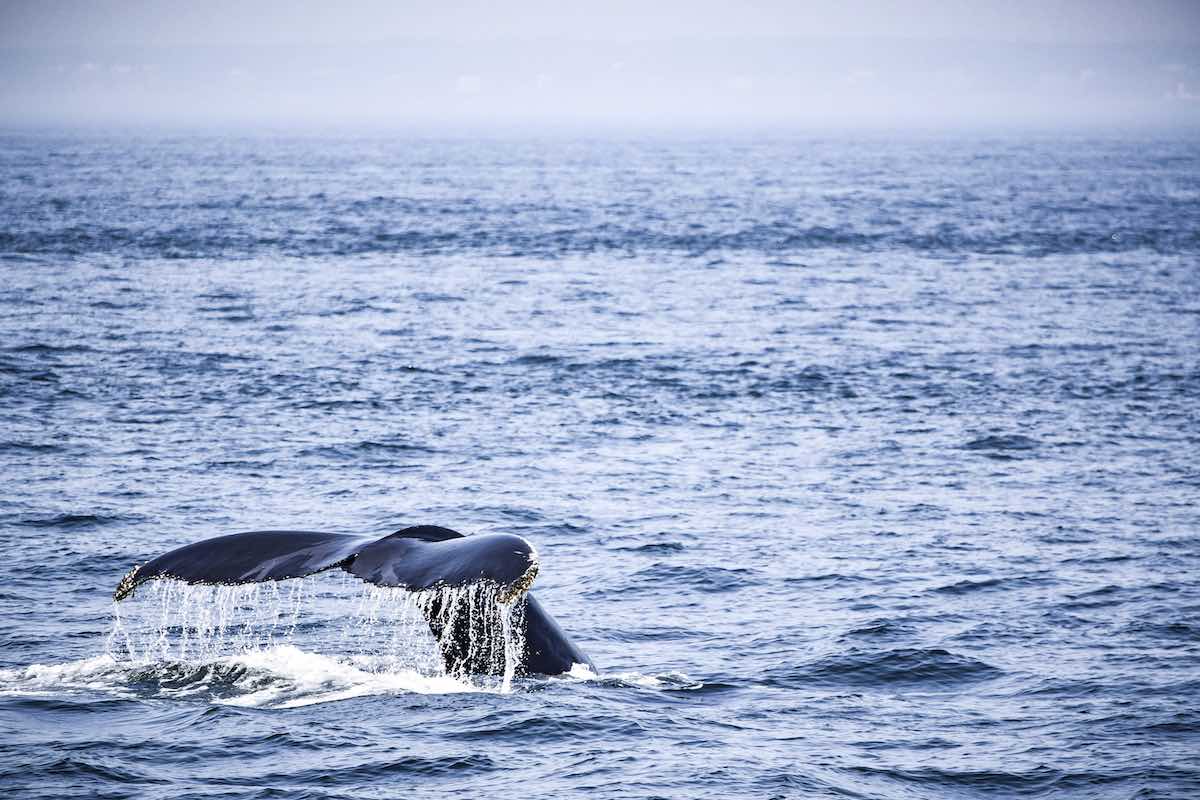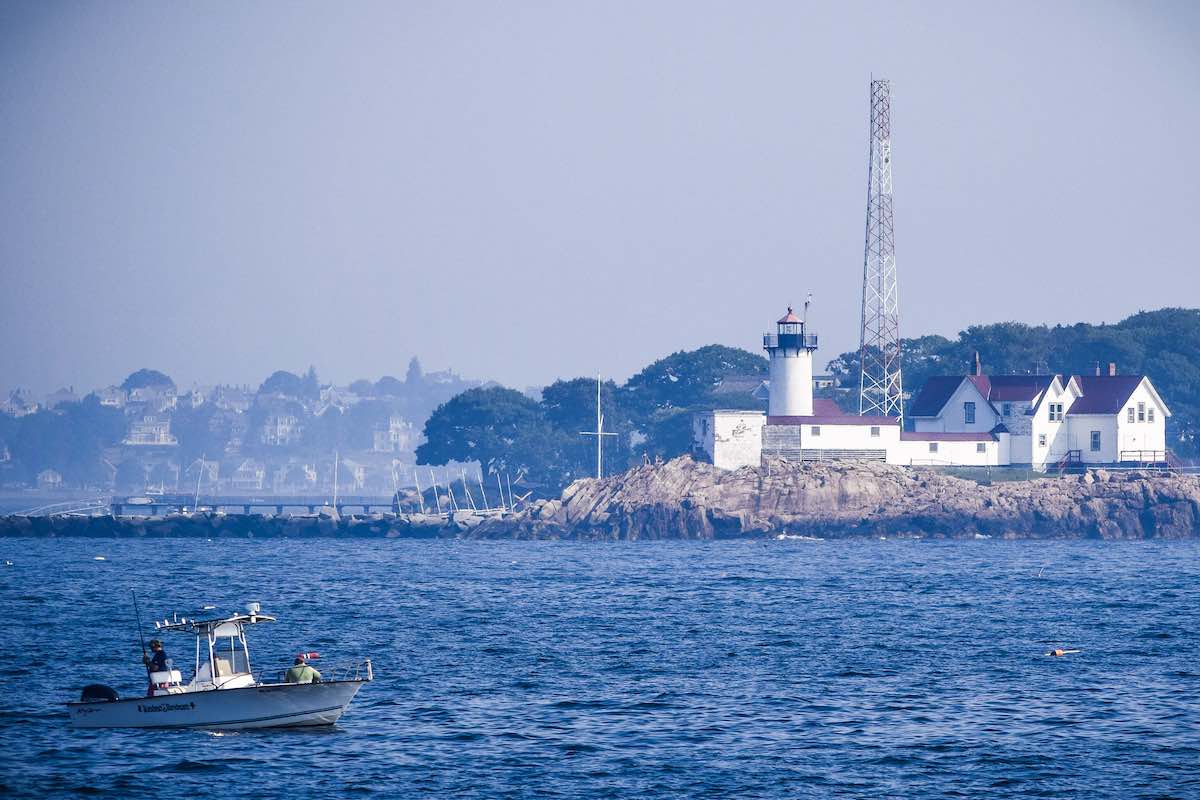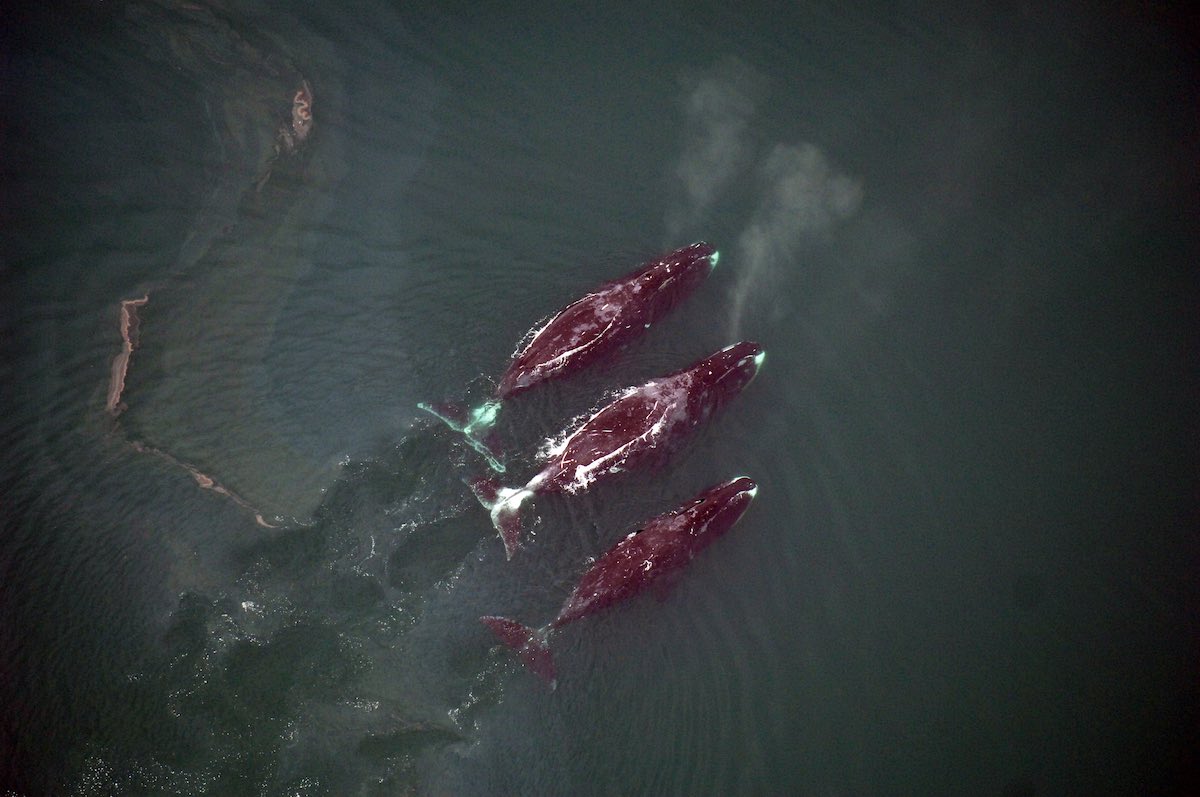Data is Power: How Access to Data is Helping Mariners Protect Whale Populations
Lessons and applications from the Atlantic and the Arctic.

“Knowledge is power,” we are often told. And to go along with that quote is this one from a more contemporary source, “With great power comes great responsibility.” Both apply to our ocean. Data spurs knowledge and that gives us both power and responsibility to make informed decisions about our ocean resources and wildlife.
Take the case of busy shipping lanes and large marine mammals like whales.
When the former overlaps with the latter, injury or death are outcomes that no one wants to see. From the remote seas of northern Alaska to the crowded coastlines off the Atlantic, Ocean Conservancy works with partners to advance the best available data to keep whales swimming and our blue economy rolling.
Whales have long played a role in the history and fortune of harbor cities like Boston, which has a very busy port. Annually, the city’s Conley Terminal moves nearly 1.5 million metric tons of cargo. That’s equivalent to about 4.5 Empire State buildings!
Two centuries ago, the commercial whaling industry brought tremendous wealth and growth to New England. Boat loads of whale blubber brought boat loads of money into coastal communities, pushing many species to near extinction. The scarcity of whales and falling demand for whale blubber led to the extinction of the U.S. whaling industry by the early 20th century.
Today, New England’s waters continue to support the regional economy. In 2018, the Port of Boston alone generated $8.2 billion in economic value and helped support 66,091 jobs that were related to cargo, cruise, seafood processing and marina activity.

Happily, many of the once-hunted whale populations are on the rise and are no longer hunted commercially in most nations. Thanks to the Marine Mammal Protection Act, only whale watching vessels and researchers are actively seeking out whales. The rest of the vessels plying the busy waters of the Atlantic are doing their best to avoid whales while continuing to be able to support their families. How do captains know when and where to steer clear?
Data.
In Moby Dick Herman Melville wrote, “It is not down on any map; true places never are.” That’s not the case today. Data hubs like the Northeast Ocean Data Portal, an outcome of Regional Ocean Partnerships like the Northeast Regional Ocean Council, provides ocean users with over 4000 data layers on interactive maps—including where whales have been sighted and migratory paths. This knowledge gives all seafarers from recreational sailors to aircraft carriers the power to reduce the likelihood of a whale strike.
But not every region has access to such an expansive data portal, even with vessel traffic set to increase rapidly and plenty of whales in the water.
The Arctic sees far fewer ships than the eastern seaboard, but the number is likely to keep rising as sea ice retreats and interest in Arctic routes and resources grows. Researchers have found that about two percent of the bowhead whales in northern Alaska bear the scars of ship strikes, so the concern is more than theoretical. Fortunately, there are already good data on the general migratory patterns of the bowheads, and we also have the experience from the Atlantic to draw on.

For many years, biologists have conducted aerial surveys of bowhead whales and other marine mammals off Alaska’s northern coast, primarily out of concern for potential impacts from offshore oil and gas activity. These data are also useful for managing ship traffic, as certain patterns in space and time are evident. In spring, the whales migrate north from the Bering Sea and then east towards Canada. At this time of year, sea ice covers most of the ocean, limiting ship traffic to the occasional icebreaker. In fall, however, the whales return in open water, at a time of year when ship traffic is at its peak.
Bowhead whales migrate along a similar route close to shore each fall. If the winds and currents are right, the area around Barrow Canyon can become prime feeding grounds for the whales and thus an area of great concern when it comes to ships. Fall weather, however, is often unsuitable for flying, so relying on the aerial surveys for real-time data is harder. Creating a data portal where ship-based observations can be added could help a great deal, to let mariners share sightings and learn where whales may be aggregating at a given time.
The next step, as in the Atlantic, is to use those data to manage ship traffic. Avoiding the whales entirely is a good goal, and long-term data can help identify areas that ships should stay away from. With 20,000 bowheads on the move, however, staying out of their migratory path entirely is not possible.
Coordination among industry and conservation to achieve outcomes that keep whales from harm through real-time reporting, temporary areas to be avoided or speed reductions allow whales and commerce to co-exist.
Whether in the Atlantic or in the Arctic, Ocean Conservancy supports data-driven solutions like those outlined in the Regional Ocean Partnership Act and cooperation among mariners, conservationists, port operators and the Coast Guard to protect marine wildlife and keep our ocean working. We hope you’re inspired to increase your knowledge about ocean planning and safer shipping in the Arctic. Don’t forget, you have the power to take action that can help our ocean continue to thrive!